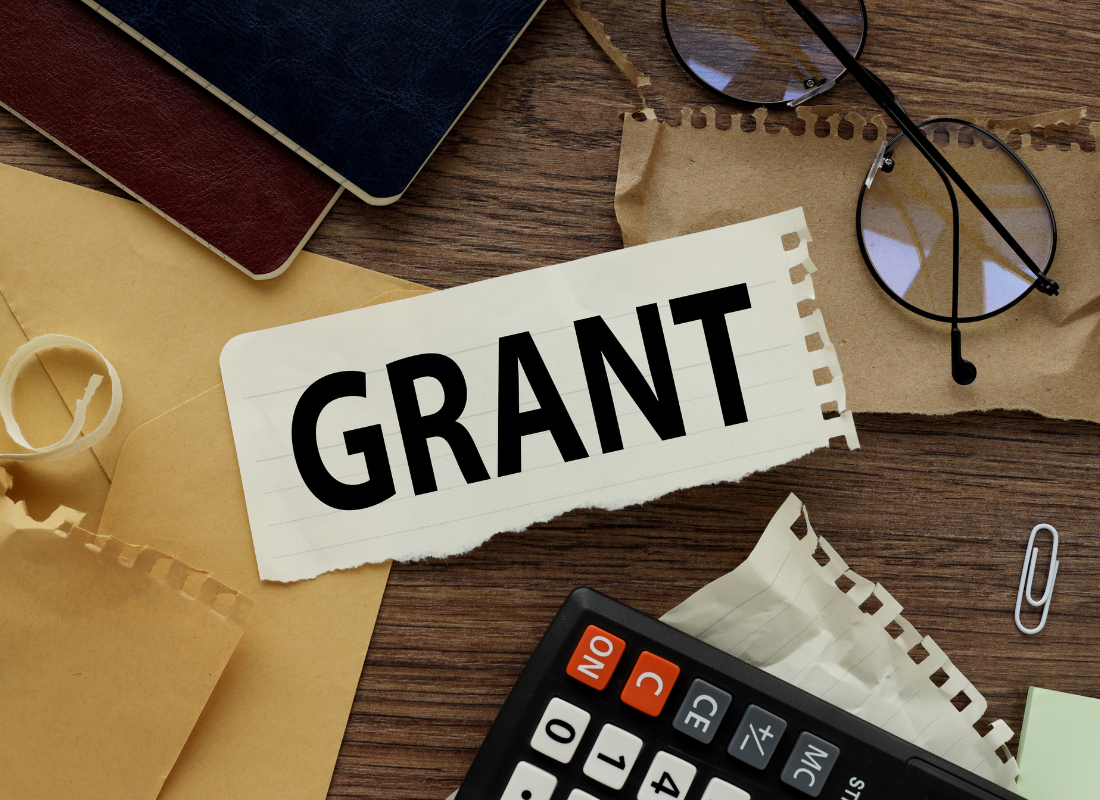6 Keys to Effective Grant Management for Nonprofits
Originally published on July 15, 2025
The current federal administration has signaled a strong pivot in its grantmaking approach, emphasizing fiscal restraint, accountability and alignment with new policy priorities. Many nonprofit leaders are facing a decrease in funding, especially those that rely heavily on federal grants. Most recipients of grants are also facing stricter oversight.
Managing grants effectively protects against these pressures, safeguards cash flow, preserves staff capacity and maintains service continuity. As a result, grant management for nonprofits is neither optional nor administrative; it’s strategic.
When we structure processes clearly, anticipate reporting demands and build internal capacity, we reduce risk and elevate impact. We’ll discuss the critical areas where nonprofit leaders must focus to refine grant practices and strengthen organizational sustainability.
Key #1: Understand funder requirements inside and out.
Every grant comes with a unique set of terms, like restricting allowable costs, requiring specific outcomes, and embedding strict timelines. Our first priority is interpreting each award with precision. In 2022 alone, the U.S. GAO documented over 12,000 federal grant awards totaling $24 billion, and noted that as of the 2023 fiscal year end, just 7% of those funds had been disbursed.
This underscores how complex layers of approval and compliance often stall delivery, and how critical it is for nonprofits to fully grasp application conditions and reporting obligations upfront. Here’s how we ensure alignment:
- Review every award letter clause, not just summaries. Verify compliance paths for allowable expenses and reporting frequencies. It’s not enough to know the individual contract guidelines; you should also be familiar with the overarching rules for federal grants. Federal grant regulations are a complex set of rules and guidelines that govern how federal agencies award and manage grants. Many state awards require compliance with these federal regulations. These regulations, primarily found in 2 CFR Part 200, aim to ensure that taxpayer dollars are spent efficiently and effectively while minimizing waste, fraud, and abuse. Understanding these regulations is crucial for grant recipients.
- Confirm cost allocations. Are indirect costs allowable at a 15% rate or based on a negotiated rate? Review cost allocation guidelines found in 2 CFR Part 200, and map cost allocation methods explicitly.
- Pinpoint deadlines. Use award letter milestones to populate shared digital calendars with interim and final reporting dates.
- Clarify deliverables. Funders increasingly expect progress tied to data-driven outcomes, not just expenditure summaries.
Understanding funder expectations is the basis for budgeting, staffing, and workflow decisions. Overlooking even a single condition can trigger ineligible costs or audit findings. By proactively interpreting grant terms and building them into internal controls, we position the organization to fulfill funder requirements and preserve reputation and relationships.
Key #2: Build a cross-functional grant management team to enforce compliance and continuity.
Grant administration is not a one-person job. Effective oversight requires intentional collaboration across finance, program, compliance, development, and leadership. That’s why we recommend establishing a grant management team before the award arrives. This team should include:
- A program lead who owns project delivery and outcome tracking,
- A finance or grants accountant who structures the budget, manages cost pools and ensures indirect costs are allocated correctly,
- A compliance coordinator who files reports and maintains documentation,
- Executive oversight that verifies every step aligns with board directives and organizational risk tolerance.
By requiring each discipline’s input on key steps (budget development, staffing, documentation, reports), we ensure pre‑award work accurately reflects costs and obligations, and post‑award processes link deliverables to outcomes and costs.
Legacy silos — in which finance and program operate in isolation — introduce risk of missed deadlines, misallocated expenses, and compliance gaps. Instead, we promote a collaborative rhythm that includes weekly check‑ins, shared dashboards, report templates, a central repository for documentation and clear role-based task assignments.
Looking ahead, technology supports this approach. Many apps and tools are available to enable role-based visibility into deadlines, financials and document ownership. The result is fewer lost receipts, consistent reporting and a unified grant team that adapts quickly when timelines shift or budget reallocations are needed.
Key #3: Implement rigorous budgeting and financial controls to protect real costs.
Budgeting for grants should be a disciplined system for accountability rooted in GAAP and federal standards (2 CFR Part 200). We build grant budgets in three steps:
- Define direct and indirect costs accurately.
- Direct costs, like program salaries, materials and travel, are tied clearly to deliverables. Many grants also allow for some direct costs to include shared expenses required to provide the program, such as rent, utilities, telephone, etc. These shared expenses must be allocated across all funding sources using an approved allocation method (see 2 CFR Part 200).
- Indirect costs (costs of administration, like the CEO’s payroll and accounting services) should be supported by a cost allocation plan consistent with guidelines found in 2 CFR Part 200. The federal de minimis rate is 15% of modified total direct costs.
- Provide line-item detail in your budget to include all anticipated costs.
- Most awards will provide an application guide that lists the types of allowable and unallowable costs. If it allows for shared costs to be allocated as direct costs (such as rent and utilities), list those in your budget.
- Be sure to include a budgeted amount for allocated indirect costs, if allowed.
- Most awards will allow for a midterm budget revision if needed. But this usually includes shifting funds within already budgeted line items (not adding new line items), so be thorough with your original budget.
- Maintain time tracking and cost monitoring systems.
- Staff must allocate hours to the grant via timesheets. Most grants, especially state and federal grants, require that your reporting of allocated expenses be based on actual staff time to that grant (not on what was budgeted). Time sheets provide the support needed to justify your allocations.
- Expenses must match approved line items or undergo documented reallocation. Know the grant’s rules for how and when budget revisions are required.
Without this discipline, organizations underreport expenses and deplete reserves (or risk ineligible costs during audit)..
Implementing successful grant management begins pre‑award with identifying cost pools, calculating rates and staffing projections. Then it continues with ongoing budget-to-actual monitoring. Financial reviews should assess spend, track timing, alert deviations and authorize adjustments.
Key #4: Monitor progress and adapt strategies using data-driven grant oversight.
To maintain alignment between goals and outcomes, nonprofits need grant progress monitoring that goes beyond financial tracking. Key performance indicators—both quantitative and qualitative—must be established at the outset, aligned with project goals, and reviewed regularly.
Effective metrics range from budget utilization rates to community engagement outcomes. It’s also important to consider historical context, participation rates, milestones and quarterly trend analysis in performance measurement.
Here’s how we embed monitoring into grant oversight:
- Set goals before the award is accepted.
- Use a shared KPI dashboard that tracks financial spend, milestones reached, outputs vs. outcomes.
- Conduct monthly check‑ins against forecasted benchmarks.
- Adjust staffing and budget in real time based on variance reports.
Monitoring grants ensures that grant expenses and activities are consistently tied to outcomes. That confidence enables us to speak confidently with funders and board donors (as well as strengthen future proposals).
Key #5: Prepare for audits and craft compelling impact narratives.
Nonprofit audit readiness isn’t something you want to rush right before your auditors arrive. It should be an ongoing discipline rooted in organized documentation and transparent practices.
External audits can take multiple forms, from IRS correspondence to field audits. Each is initiated with an opening letter and concluding with a closing letter or compliance findings. Federal single audits become mandatory when federal grant receipts reach $1,000,000 or more in a fiscal year, in accordance with Uniform Guidance.
To stay prepared, these steps are essential:
- Comprehensive documentation: Board minutes, grant agreements, expense receipts, cost allocation plans, timesheets, trial balance, schedules of federal awards
- Internal control documentation: Expense policies, segregation of duties policies, approval workflows.
- Clean financial statements: General ledger, reconciliations, functional expense allocation schedules.
- Audit readiness calendar: Pre-audit checklist three months before year-end, dry runs of document retrieval, board briefings.
Whether audits are simple paperwork checks or full field visits, organizations that follow these steps experience smooth reviews and fewer audit findings.
Documented audit readiness also supports one of our final priorities: storytelling with impact. When narratives are supported by real metrics, aligned with grant outcomes, and validated by audits, they resonate with funders.
Key #6: Proactive grant management underpins nonprofit sustainability.
Grant management for nonprofits is the linchpin that enables mission-driven organizations to operate with clarity, confidence, and credibility. By combining clear communication, solid financial controls, routine performance tracking and audit preparation, we provide a solid foundation for you to share your story with maximum impact.
At James Moore, our nonprofit accounting & advisory services team helps mission-driven leaders apply these principles every day. Whether your organization is preparing for a single audit, optimizing indirect cost recovery, or enhancing reporting workflows, we’re here to help you build resilient systems that reinforce your mission and support sustainable growth.
For grants of any size, now is the time to act. Contact a James Moore professional today and let’s strengthen your grant operations.
All content provided in this article is for informational purposes only. Matters discussed in this article are subject to change. For up-to-date information on this subject please contact a James Moore professional. James Moore will not be held responsible for any claim, loss, damage or inconvenience caused as a result of any information within these pages or any information accessed through this site.
Other Posts You Might Like




